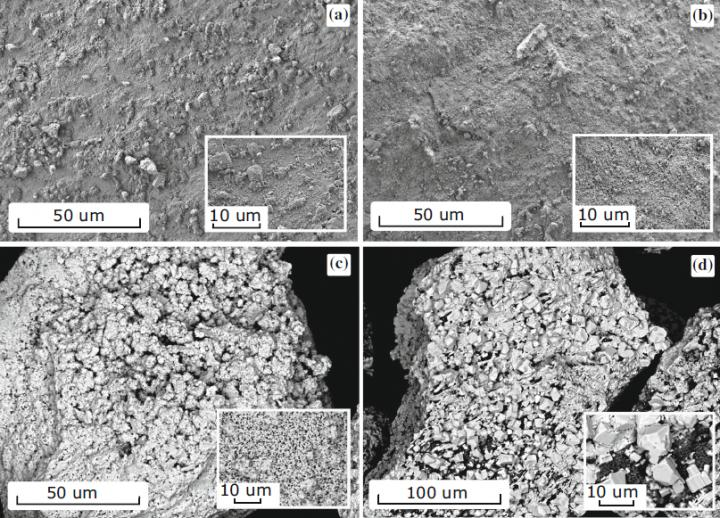Jun 1 2020
Researchers at the Far Eastern Federal University (FEFU) and their collaborators from the Institute of Chemistry FEB RAS have developed a smart technology for producing a sorbent based on a “tungsten bronze” compound powder (Na2WO4).
 SEM images of tungsten oxide samples, (a) WO3-100, (b) WO3-300, (c) WO3-600, (d) WO3-900. Image Credit: FEFU press office, The Institute of Chemistry FEB RAS.
SEM images of tungsten oxide samples, (a) WO3-100, (b) WO3-300, (c) WO3-600, (d) WO3-900. Image Credit: FEFU press office, The Institute of Chemistry FEB RAS.
The sorbent can be used to remove the dangerous radionuclides strontium (90Sr) and cesium (137Cs) from industrial and drinking water, as well as for efficient processing of liquid radioactive waste. A paper based on the study has been published in the Journal of Materials Science.
The new sorbent is specifically well-suited if the concentration of the dangerous radioactive elements is very high compared to the acceptable level—to process liquid radioactive waste in nuclear plants and to avoid the impact of technological accidents.
The newly developed sorbent resolves one of the critical problems of modern radioecology— removing entirely or down to the level of regulative standards the dangerous radioactive elements strontium (90Sr) and cesium (137Cs) that could accumulate in the body, substituting calcium and potassium.
The waste sorbent can presumably be transformed into high-density ceramics with subsequent safe disposal.
We propose to apply a sorbent in several ways. First, in the static version, granules based on tungsten bronze powder can simply be introduced into the volume of contaminated water bodies. Second, in a dynamic mode, porous sorbent tablets can be a component of flow filters.
Arthur Drankov, Member of the Creative Team and Postgraduate Student, School of Natural Science, Far Eastern Federal University
Drankov continued, “The high filtration efficiency registered by calculation methods determining the residual amount of radionuclides in sorbent-purified solutions, as well as the number of radionuclides retained in the sorbent body. We appreciate the Institute of Chemistry FEB RAS for the partial development of these methods in the frame of state assignment.”
“We have studied physicochemical properties of the sorbent material via high-class Shimadzu equipment (Japan) and do believe that the operational properties of the material are up to analogs produced by more expensive technologies. Thus, we hope that our synthesis method will be recognized by the industry as most practical and technologically effective,” added Drankov.
The researchers note that, if the water sorbent is regenerated, it can serve five or more cycles. But reuse of “tungsten bronze” sorbents is not the main concept, provided that it exhibits excellent capabilities to absorb 90Sr and 137Cs radionuclides.
The benefit put forward by scientists at FEFU School of Natural Science and FEB RAS is to transform sorption tablets or waste granules to high-density ceramics for further safe disposal during the half-life of dangerous radioactive elements. For strontium and cesium, this duration is approximately 29 years and 30 years, respectively.
As the next phase of the study, the researchers will design a transforming-to-ceramics technology financially supported by a grant of the Russian Foundation for Basic Research (Grant chief is I. G. Tananaev, Director of FEFU School of Natural Science, corresponding member of the Russian Academy of Sciences).
The team notes that the comprehensive result will be an economical technology that ensures environmental safety while handling radioactive waste.
Journal Reference:
Egorin, A M., et al. (2020) Synthesis and sorption characteristics of tungsten oxides-based materials for Sr-90 removal from water media. Journal of Materials Science. doi.org/10.1007/s10853-020-04683-7.